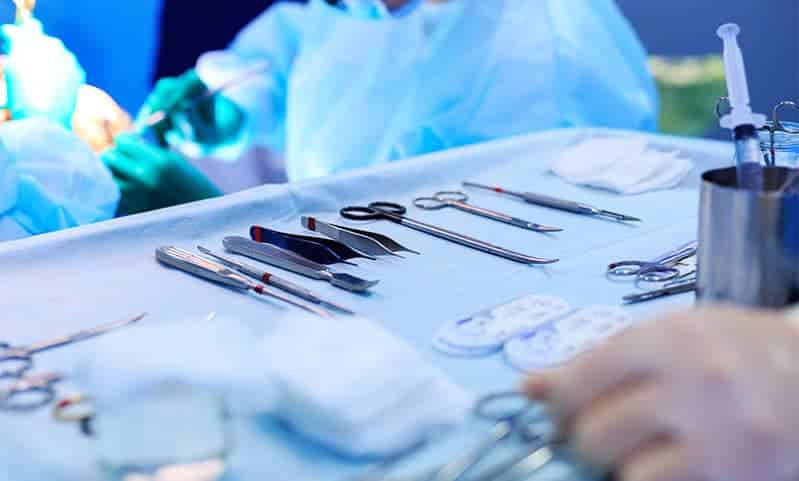An Indiana hospital recently sent a letter to over 1,100 patients which said that unsafe practices placed them at risk for HIV, hepatitis, and other serious infections.
Officials at Goshen Hospital told patients that a surgical technician failed to properly clean instruments for several months. However, the hospital insisted the actual illness risk was “extremely low.”
Those words failed to comfort many patients. Lori Deboard was “overwhelmed” when she heard the news. “I was mad, I was really, really mad because when you tell somebody that they could be at risk for something like that, and not only involves you it involves your family, your significant other,” she said.
The hospital said it was “concerned” about the risk of infection and that “strict policies and additional safety measures [are] in place to ensure it does not happen again.”
Instrument Sterilization
Super-heating surgical instruments is probably the most efficient way to sterilize these tools and prepare them for use. But there are some risks.
Excessive heat kills bacteria. But high heat has the opposite effect. If the equipment does not heat up to exactly the right level, bacteria does not die.
These are not isolated incidents. According to one study, tens of thousands of surgical instruments are under heated, especially at VA hospitals.
One big problem is that many hospitals fail to account for the complex nature of today’s surgical instruments. Until the 1990s, most surgical tools resembled mechanic’s or butcher’s tools.
Since they were made almost exclusively from metal and glass, they were relatively easy to clean.
But the explosion of minimally-invasive procedures changes things considerably. Today’s instruments are smaller, more intricate, and come with lots of moving parts. These instruments are not as easy to sterilize. Yet in many situations, the procedure is essentially unchanged.
On a related note, some instruments are too hot. The medical staff does not sufficiently cool superheated instruments before using them on patients. Serious burns often result.
Sometimes, the device itself is the problem. The Bair Hugger Warming Blanket is a good example. For various reasons, hospitals are usually cold. So, a warm blanket may be one of the best therapies. The BHWB sucks air from near the floor, heats it, and uses it to warm the blanket.
That all sounds good, but there is a problem. The air near the floor is dirty, As the air passes through a tube and is heated, bacteria grows. This bacteria-infested air then goes near open wounds.
Your Claim for Damages
In most cases, the hospital is ultimately responsible for injuries related to improper instrument heating or sterilization.
The high doctor-patient duty makes this responsibility easier to establish in court. Doctors have a fiduciary duty toward their patients.
They must put aside any motivation related to efficiency or making money and concentrate solely on what is best for the patient.
Because of this duty, compensation in these situations is usually high. This compensation includes money for economic losses, such as medical bills, and noneconomic losses, such as pain and suffering. Additional punitive damages are usually available as well.
If a dangerous product causes the victim’s injury, the product maker may be responsible for damages as a matter of law. This defect could be:
- Design Defect: As mentioned, some surgical tool heating devices are not designed to clean modern instruments. It’s like putting a square peg into a round hole.
- Manufacturing Defect: Other times, the device is solid as designed, but manufacturers use cheap parts and components. As a result, the gadget does not work properly, especially after repeated uses.
In terms of responsibility, it does not matter how careful or how careless the company was. However, if the company put profits before people and knowingly sold a dangerous product, that fact could be relevant in terms of punitive damages. These additional damages punish the company and deter future wrongdoing.
But I Have a Pre-Existing Condition
Pre-existing conditions are very common in bacterial infection claims. Frequently, these infections are not too serious unless the victim is prone to a certain kind of illness.
In these situations, the eggshell skull rule protects victims. This doctrine states that tortfeasors take victims as they find them. A defendant cannot use a victim’s pre-existing condition as an excuse to reduce compensation. All these bills still need to be paid, and it is patently unfair for victims to pay for part of their own recovery.
The eggshell skull rule applies in other personal injury cases as well, such as car wrecks and workers’ compensation claims.
Dirty surgical instruments and other medical devices often cause serious injuries. For a free consultation with an experienced personal injury attorney in New York, contact Napoli Shkolnik PLLC. Home and hospital visits are available.
